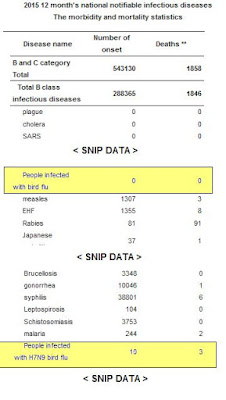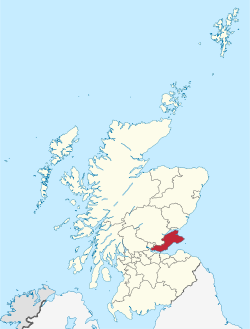# 10,876
Since it first emerged in the winter-spring of 2013, avian H7N9 has proved exceptionally difficult to control because - unlike the HPAI H5 viruses we monitor (H5N1, H5N6, H5N8, etc.) - the H7N9 virus is benign in most birds (including poultry).
HPAI H5 viruses - at least in unvaccinated birds - produce significant morbidity and mortality in poultry, and that provides an early warning to poultry producers that something is amiss and testing and safety precautions are needed.
With H7N9, often our first clue that local poultry are infected comes only after humans - who are susceptible to severe infection - fall ill. All of which makes H7N9 a stealth virus among poultry, and particularly difficult to detect and eradicate.
Selective serological and PCR testing of poultry for the H7N9 virus began in 2013 - but a decade ago China was reportedly raising in excess of 15 Billion birds (cite) each year - so only a tiny fraction of a single percent can be tested.
Despite these limitations, testing can give us an idea of how far the virus is spreading geographically, and a general idea of its degree of infiltration into a region's poultry.
Serological testing indicates the birds have antibodies to the virus, indicating prior exposure, while PCR testing finds evidence (either directly from the bird, bird feces, or environmental sampling) of active infection and viral shedding.
Based on nearly 190,000 samples tested in December, the MOA surveillance system detected low to moderate levels of the virus in samples from 8 different provinces (out of 32 Provinces, municipalities & regions tested).
A bit surprisingly, the two highest serological detection rates were Sichuan Province (5.97%) and Gansu Province (3.13%), neither of which has reported any human H7N9 cases to date.
The full report (including my modified chart) follows:
Date: 2016-01-11 16:43 source:In December 2015, the national veterinary laboratory animal 188,241 samples total sampling at various levels, covering some 6,467. 134,476 detection of serological samples, check out the H7 subtype of seropositive 380 samples from Sichuan province, Gansu province, Henan province, Jiangxi province and 33 farms (household) and 5 live bird market. Detection of pathogenic 53,765 samples, check out 12 H7N9 pathogen-positive samples, from Jiangsu Province and Shanghai Municipality, Hunan province and Jiangxi province, Fujian province and Guangdong Province, 6 7 live poultry markets in the provinces.Instructions for positive samplesA serological positive samples, the H7 subtype of bird flu (380)(A) chicken samples, Sichuan province, 197, 3 chicken farms and from deyang City 2 live bird market.(B) chicken 129 samples in Gansu province, from Lanzhou city, Jiuquan, Zhangye city, Pingliang, Tianshui, dingxi city and 16 chicken farm of linxia (), as well as live poultry market in Lanzhou and Baiyin city, 3.(C), 33 chicken samples, Henan, respectively from Zhengzhou, Anyang, jiaozuo, changyuan dengzhou, and 11 chickens (household).(D) of Jiangxi province 7 samples from a chicken farm, Ganzhou City; Duck 14 samples from 2 duck farms in Nanchang.Second, H7N9 pathogen-positive samples (12)(A) Chong ' an sea food market in Wuxi city, Jiangsu Province, chicken sample 2, ducks 1 samples.(B) the Shanghai Songjiang district Shanghai Huai agricultural and sideline products markets chicken 2 samples, environmental samples 1.(C) the AP sample 1 xiangyin, Yueyang city, Hunan province, Hunan province, farmers ' markets, Yuanjiang, yiyang city of Hunan province market samples of chickens, ducks 1.(D) of Poyang County, Shangrao city, Jiangxi province, Gao Jia Ling chicken market sample 1.(E) xiangan district, Xiamen City, Fujian province, MA Xiang, the farmer's market chicken samples 1.(Vi) in haizhu district, Guangzhou City, Guangdong Province, China market of chicken samples 1.
 |
| Click To Enlarge - Modified From MOA Chart |

















 src="https://blogger.googleusercontent.com/img/b/R29vZ2xl/AVvXsEh4zgoKkY5esDyGDfXmhp5tz0W8H2jEgsRJx2wm9317hpr6CTdO8i4DPQj5mF-OAprw6GVcNt84Pt9Yp5U6XEz5h_pAP7azclFEO7kSUzDjr31IvLdzT01usqHnjVk1bBWsqpHQX6G4AIU/s1600/Photo0783.jpg" />
src="https://blogger.googleusercontent.com/img/b/R29vZ2xl/AVvXsEh4zgoKkY5esDyGDfXmhp5tz0W8H2jEgsRJx2wm9317hpr6CTdO8i4DPQj5mF-OAprw6GVcNt84Pt9Yp5U6XEz5h_pAP7azclFEO7kSUzDjr31IvLdzT01usqHnjVk1bBWsqpHQX6G4AIU/s1600/Photo0783.jpg" />












